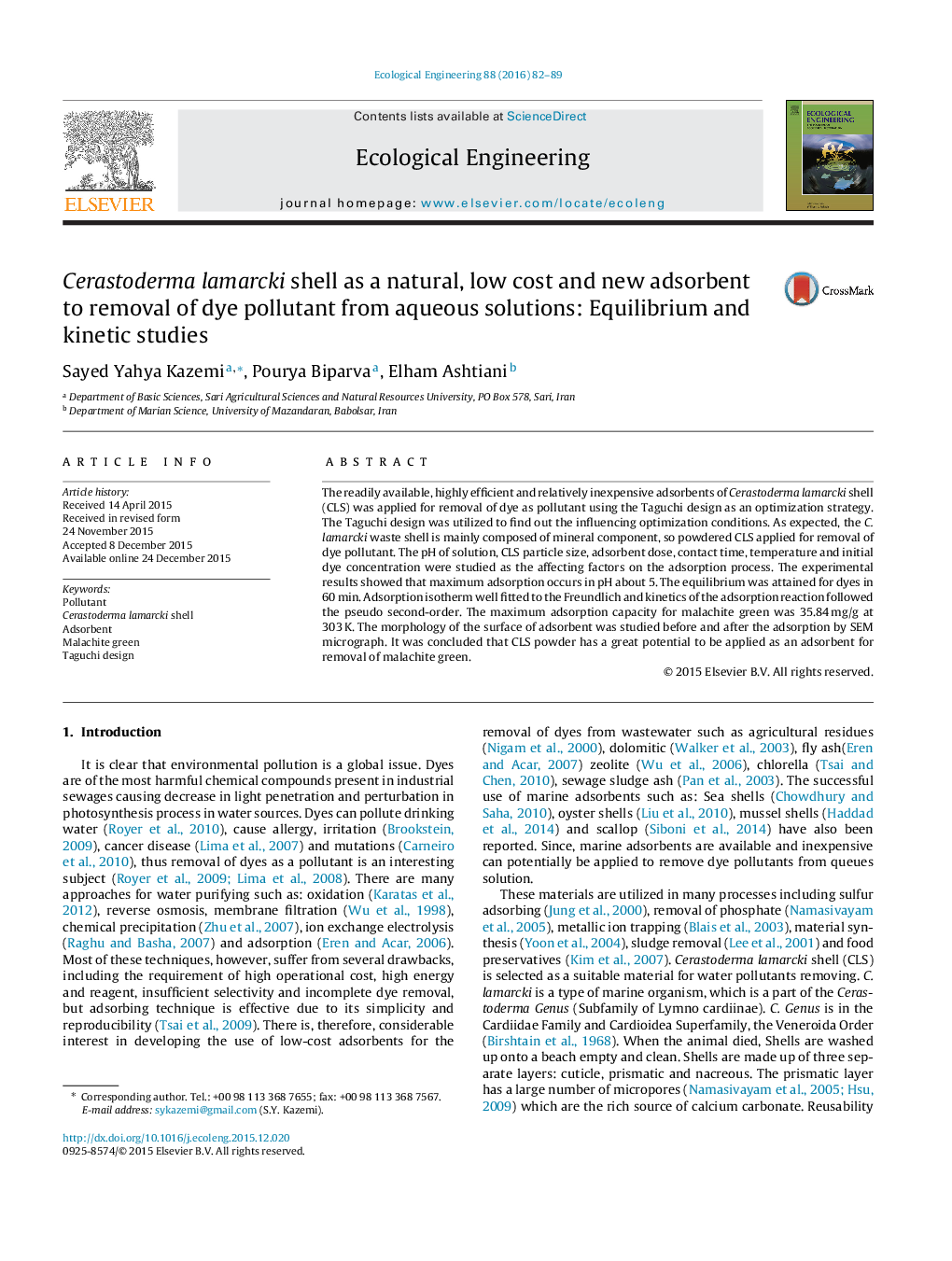| Article ID | Journal | Published Year | Pages | File Type |
|---|---|---|---|---|
| 6301537 | Ecological Engineering | 2016 | 8 Pages |
â¢Optimization of removal process of dye using Taguchi design method.â¢Cerastoderma lamarcki shell has potential as low-cost marine biosorbent for dyes removal.â¢The maximum adsorption capacity obtained from Langmuir isotherm equation was 35.84 mg/g.â¢The pseudo-second-order kinetic model fits better with experimental data.â¢Surface of adsorbent was investigated before and after of adsorption with SEM micrograph.
The readily available, highly efficient and relatively inexpensive adsorbents of Cerastoderma lamarcki shell (CLS) was applied for removal of dye as pollutant using the Taguchi design as an optimization strategy. The Taguchi design was utilized to find out the influencing optimization conditions. As expected, the C. lamarcki waste shell is mainly composed of mineral component, so powdered CLS applied for removal of dye pollutant. The pH of solution, CLS particle size, adsorbent dose, contact time, temperature and initial dye concentration were studied as the affecting factors on the adsorption process. The experimental results showed that maximum adsorption occurs in pH about 5. The equilibrium was attained for dyes in 60Â min. Adsorption isotherm well fitted to the Freundlich and kinetics of the adsorption reaction followed the pseudo second-order. The maximum adsorption capacity for malachite green was 35.84Â mg/g at 303Â K. The morphology of the surface of adsorbent was studied before and after the adsorption by SEM micrograph. It was concluded that CLS powder has a great potential to be applied as an adsorbent for removal of malachite green.
Graphical abstractDownload high-res image (223KB)Download full-size image
